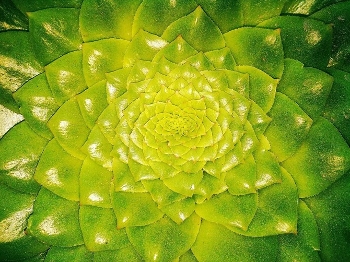| Description | Participants | Agenda | Summary | Products |
|---|
NIMBioS Investigative Workshop
Morphological Plant Models

Topic: Morphological Plant Modeling: Unleashing geometric and topologic potential within the plant sciences
Meeting dates: September 2-4, 2015
Location: NIMBioS at the University of Tennessee, Knoxville
Organizers:
Alexander Bucksch, Schools of Interactive Computing and Biology, Georgia Institute of Technology, Atlanta
Dan Chitwood, Donald Danforth Plant Science Center, St. Louis
Objectives: An increasing population faces the growing demand for agricultural products. Accurate global climate models that account for individual plant morphologies are needed to predict favorable human habitat. At the heart of addressing the problems of climate change and food security is the challenge of modeling plant morphology under field conditions, which requires the integration of plant biology and mathematics. An improved understanding of the mechanistic origins of plant development requires geometric and topological descriptors to characterize the phenotype of plants and its link to genotypes. However, the current plant phenotyping framework relies on simple length and diameter measurements, which fail to capture the exquisite architecture of plants. This workshop set new frontiers in combining plant phenotyping with recent results from shape theory at the interface of geometry and topology. The workshop explored the potential of new mathematical concepts to analyze and quantify the relationship between morphological plant features. Plant biologists and theorists participated in presentations and group discussions focused on developing plant science questions that can be innovatively answered. Participants explored novel techniques, including persistent homology, graph-theory, and shape statistics to tackle questions in crop breeding, developmental biology, and vegetation modeling. The limitations of technological systems to capture plant morphology above and below ground were discussed in order to focus on the application of existing concepts and the need to identify new mathematical directions.
The workshop's mathematical/computational focus was to identify current cutting edge mathematical and computational techniques to analyze, model, and describe plants from the cell to the organ level and identify mathematical challenges in plant science applications. The biological focus was on how biologists can develop datasets and provide perspectives to establish simple model systems that employ favorable mathematical and technological constraints to discover special cases for later generalization. The scientific goal was to develop a suite of biological questions that allow workshop members to jointly pioneer the use and development of geometric and topological methods within the plant sciences. The synergy provided from uniting these disparate disciplines will potentially fuel future collaborations and hasten new studies and perspectives in plant phenotyping.
 Morphological Plant Models WordPress site
Morphological Plant Models WordPress site
![]() Live Stream.
Presentations were available for viewing via live streaming during the workshop. .
Live Stream.
Presentations were available for viewing via live streaming during the workshop. .
Playlist of online videos of selected workshop presentations
 Summary Report. TBA
Summary Report. TBA
Products
Publications
Bucksch A et al. 2017. Morphological plant modeling: unleashing geometric and topological potential within the plant sciences. Frontiers in plant science 8:900. [Online]
Balduzzi et al. 2017. Reshaping plant biology: qualitative and quantitative plant morphology. Frontiers in Plant Science. [Online]
Li M, Duncan K, Topp CN, Chitwood DH. 2017. Persistent homology and the branching topologies of plants. American Journal of Botany, 104 (3): 349. [Online]
Li et al. 2017. Persistent homology: a tool to universally measure plant morphologies across organs and scales. bioRxiv. [Online]
Leiboff S, DeAllie CK, Scanlon MJ. 2016. Modeling the Morphometric Evolution of the Maize Shoot Apical Meristem. Frontiers in Plant Science, 7: 1651. [Online]
NIMBioS Investigative Workshops focus on broad topics or a set of related topics, summarizing/synthesizing the state of the art and identifying future directions. Workshops have up to 35 participants. Organizers and key invited researchers make up half the participants; the remaining participants are filled through open application from the scientific community. Open applicants selected to attend are notified by NIMBioS within two weeks of the application deadline. Investigative Workshops have the potential for leading to one or more future Working Groups. Individuals with a strong interest in the topic, including post-docs and graduate students, are encouraged to apply. If needed, NIMBioS can provide support (travel, meals, lodging) for Workshop attendees, whether from a non-profit or for-profit organization.
A goal of NIMBioS is to enhance the cadre of researchers capable of interdisciplinary efforts across mathematics and biology. As part of this goal, NIMBioS is committed to promoting diversity in all its activities. Diversity is considered in all its aspects, social and scientific, including gender, ethnicity, scientific field, career stage, geography and type of home institution. Questions regarding diversity issues should be directed to diversity@nimbios.org. You can read more about our Diversity Plan on our NIMBioS Policies web page. The NIMBioS building is fully handicapped accessible.
NIMBioS
1122 Volunteer Blvd., Suite 106
University of Tennessee
Knoxville,
TN 37996-3410
PH: (865) 974-9334
FAX: (865) 974-9461
Contact NIMBioS


